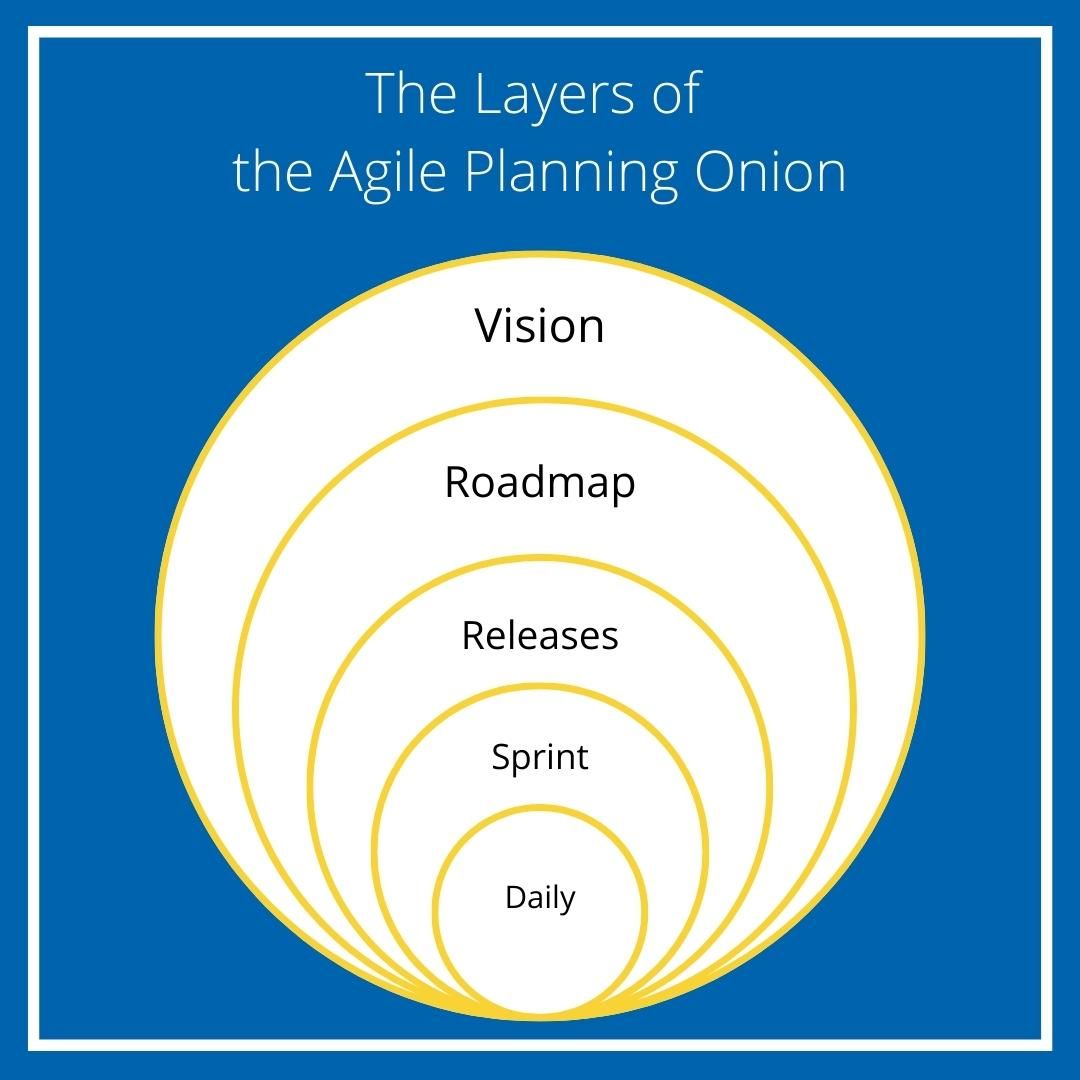BLOG

The Agile Planning Onion Revealed
Agile shops often have a love/hate relationship with the concept of “planning.” Can you be truly agile and still plan? YES! You most definitely can. Actually, we encourage you to do so.
No matter what flavor of agile your company embraces, planning is imperative to having a successful product build. Planning doesn’t just happen at the start of every Sprint evaluating the backlog. It should start before a developer receives the new project.
Product planning is like the layers of an onion, each one important to protecting the one under it. If each level of planning is done properly, it ensures the next levels can be successful, thus, the whole project is successful.
Enter the Agile Planning Onion

The Agile planning onion is an approach to business planning that leads to successful products and companies. The development team isn’t necessarily going to be planning at every level of this onion. Still, it’s important for the business, stakeholders, and development team leads to understand each layer of this onion.
Define the Vision
Typically, the vision will be cast by the product owner or the business team requesting the product or feature. You’ll want to ask yourself, “What problems are we trying to solve and for whom are we doing so?”
It’s easy to say the product is being built or updated to increase revenue, but that doesn’t align with an agile methodology of focusing on the end user. How is your end user going to benefit from this new product or change? If they aren’t, stop here and re-evaluate the proposal.
The product vision should act as a beacon throughout the product life cycle. If things need to change on the original prescription of the product (which of course they often do), then any change should still answer to this vision.
Create the Product Roadmap
The product roadmap will effectively be a high-level plan of action for the product. The roadmap will take a long-term view of the entire product and layout features and milestones along the way. While dates are typically left off of this stage of planning, it will consider the priority of features.
It’s often the roadmap that creates the biggest tension between the business and stakeholders. The roadmap should not be viewed as a Gantt chart with strict deliverables dates. The roadmap starts to provide structure around the best approach for the development team but falls short of providing a project timeline.
Structure the Product Releases
It’s the release timeline that will add structure around project dates and milestones. Here the product owner will organize the product roadmap around a begin a rough timeline for the development team to release features.
As we all know, agile development often shifts deliverables based on stakeholders and user feedback; having a foundational calendar of expected releases gives the development team goals and provides an excellent communication tool with the stakeholders and business.
Plan the Sprints
We talked in depth about the benefits of sprint planning and how to do so effectively. The regular, structured sprint planning process keeps development teams accountable for the work getting done and motivated to stay on task.
At the end of each sprint, before the next planning round occurs, the team should receive feedback from the user to determine if any changes need to be made to the expected plan.
Work Cohesively Day-to-Day
In my opinion, the daily stand-up is one of the most important layers of the onion. Daily planning within the development team is an extremely powerful tool to keep the team cohesive and aligned. It will help to ensure that they work together, ensuring the work each day is efficient and beneficial to the overall sprint and product.
Actively Using the Agile Onion for Success
These five layers of the agile onion don’t exist independently, and they aren’t perfected overnight. An onion takes months to grow, and the agile onion may take months to figure out. You and your team should be proactive in communicating about the layers to build a strong agile system around your project.
YOU MAY ALSO LIKE


